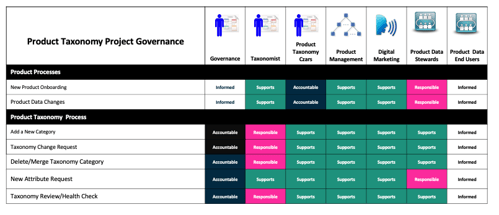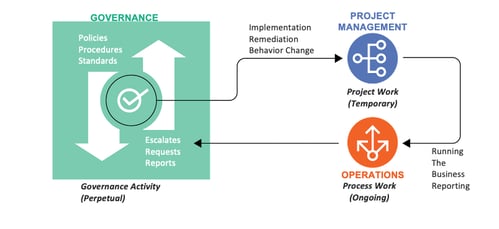A new PIM system costs a lot of money, but is also a huge asset. It allows a company to organize its product data, which is almost as important as the data itself. How do you keep things on track?
Here are 6 steps to success with your PIM implementation project:
1. Strong project management
The backbone of any project is having a strong project manager. Someone who has a focus on the scope, who can herd all the cats and who can coordinate with the PIM software or integrator project manager.
Don’t assume that all you need is the project manager on the PIM vendor/integrator side.
It’s important that your company has its own PIM project manager, not only because only that project manager can truly coordinate internally, but they have their eye on the company’s best interests.
2. Stakeholder buy-in
Identify who needs to have buy-in. At first you may simply have a core team: a project manager, the project sponsor, and the PIM owner. Other people also may need to have a voice in this project. An initial RACI chart such as the one shown below can help organize the people involved.

Who are the key people that interact with product data in the current process?
Most companies will have product managers, marketing, and e-Commerce folks all of whom both create and use the data that will be in the PIM.
Manufacturers will also have engineers who supply data.
Distributors will have many suppliers whose data input needs to be coordinated.
Each team needs to have a voice, and their requirements need to be understood.
3. Communication with stakeholders
An initial kick-off meeting to should be held to show the project plan and where you will be asking for their time, both during and after the initial PIM project, is essential. Continuous communications via email to keep everyone up to date on the scope and progress helps tremendously. PRO TIP: Keep the same format! For example, at template can be used to show weekly objectives and action items, the person responsible and the due date.
Read: PIM Project Best Practices - Communicating With Stakeholders
4. Project governance
Another chart in addition to the RACI is a project process map. Show all the key activities and deliverables of the project.
Certain documents will be needed during implementation to set up the PIM. These could include:
- a integration model to identify all systems that will be linked to the PIM,
- a logical data model to establish key entities,
- primary taxonomy to build the organizing backbone of the PIM,
- attribution schema to identify all the attributes with their metadata,
- and, of course, the data itself.
It is also important to identify the key players who will participate in ongoing governance.
- Who owns each of these documents?
- Who is going to be attending training?
- Who is going to be part of the governance processes post PIM go live?
As shown in the table below, governance is a process. Some activities are temporary, some are ongoing, and some are perpetual. We can see what this cycle looks like in the table below.

5. Post-project process governance
One of the key things about governance is that it not only identifies who is involved in the ongoing processes; it also establishes accountability.
If accountability is lost, then the PIM and the data managed within quickly loses its steam and starts to fail.
Product information management governance ensures that this doesn’t happen. The ongoing processes need to be identified, and the people who are involved in those processes need to be established.
The RACI chart mentioned before is re-created for the ongoing process.
The temporary project work RACI may be very similar to the ongoing process work RACI. It can also be much broader, encompassing several more people rather than representative people for a team.
For example, during the project, one product manager may have been involved in PIM implementation to ensure the project had a product manager perspective while building out structures and process. The ongoing governance process, post go live, will include all product managers because they need to approve data for their specific products.
This will broaden the RACI chart. A process map is used to lay out the steps for each process.
Key performance indicators (KPIs) are established to measure success.
PIM KPIs can include
- “time to market” for an onboarding process
- “success score” for an audit process (used to check the product data for accuracy and consistency)
- "overall data fill” (the percentage of attribute values filled in with data)
6. Celebrate quick wins
Start this when you select the PIM you are going to go with, high five! That decision is a huge project in itself! Different PIMs have a lot in common but they function in very different ways. The wrong choice can have long lasting, and costly impact.
Make sure the PIM you choose is the right one for your company.
Onboarding a PIM is not simply about downloading an app. Certain structures need to be in place, such as the logical data model and taxonomy. Each of those aforementioned builds are a huge win, so celebrate them. Even when you hit an interim KPI, such as a 70% data fill, celebrate!
PRO TIP: Don’t expect a 100% data fill when you first onboard a PIM system.
These wins are a key component to successful PIM implementation and very important to the overall picture.
We hope this helps you on the way to having a strong PIM system.
If you need help with any of these steps--selecting a PIM, building the logical data model, attribution schema or taxonomy--we would love to help, and will supply many high fives along the way as a bonus. Contact us now!
